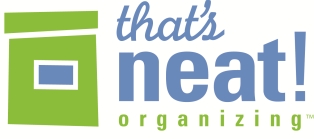Favorite Container #9: Closet with Adjustable Shelving
/A closet is one of my favorite containers for organizing the home. Whether it holds food, clothes, toys, games, party supplies, or winter coats, the closet is an important tool for keeping chaos at bay.
And I don’t mean because you can stuff things in and simply shut the door! A closet can provide a ton of storage. I’ve found that one of key elements to a functional closet is having shelving, and preferably, adjustable shelving.
I like adjustable shelving because it gives you the flexibility to move the shelves based on what you are storing. While fixed shelving (often in bedrooms) is better than no shelves at all, installing shelves that can move helps the closet adjust to whatever you decide to keep inside.
For example, the closet in my family room is filled with arts and crafts, photo albums, sewing items, and gift wrapping supplies. I was able to cut and install the shelving to fit perfectly around my Rubbermaid Wrap n’ Craft storage container. But if I end up storing games or something else in here, I can lower the shelf height and use a longer shelf piece.
One of my favorite projects was converting our barely-useful hall closet into an awesome storage space. Originally this closet had the typical clothing bar and one high shelf, with a huge open space underneath. Suitcases, bags, the vacuum and my husbands work clothes ended up there, but there was a ton of unused space.
After installing adjustable shelves, this closet not only holds clothes, but also all our travel items, the beach towels and bags, and extra bedding. We picked the shelf height based on what we were going to store inside.
As soon as the cracked walls in my bedroom closet are fixed, I can’t wait to try out elfa shelving from The Container Store. Stay tuned for more on that project.
The bottom line: If you are creating a closet from scratch or re-doing an old closet, install adjustable shelving.



















